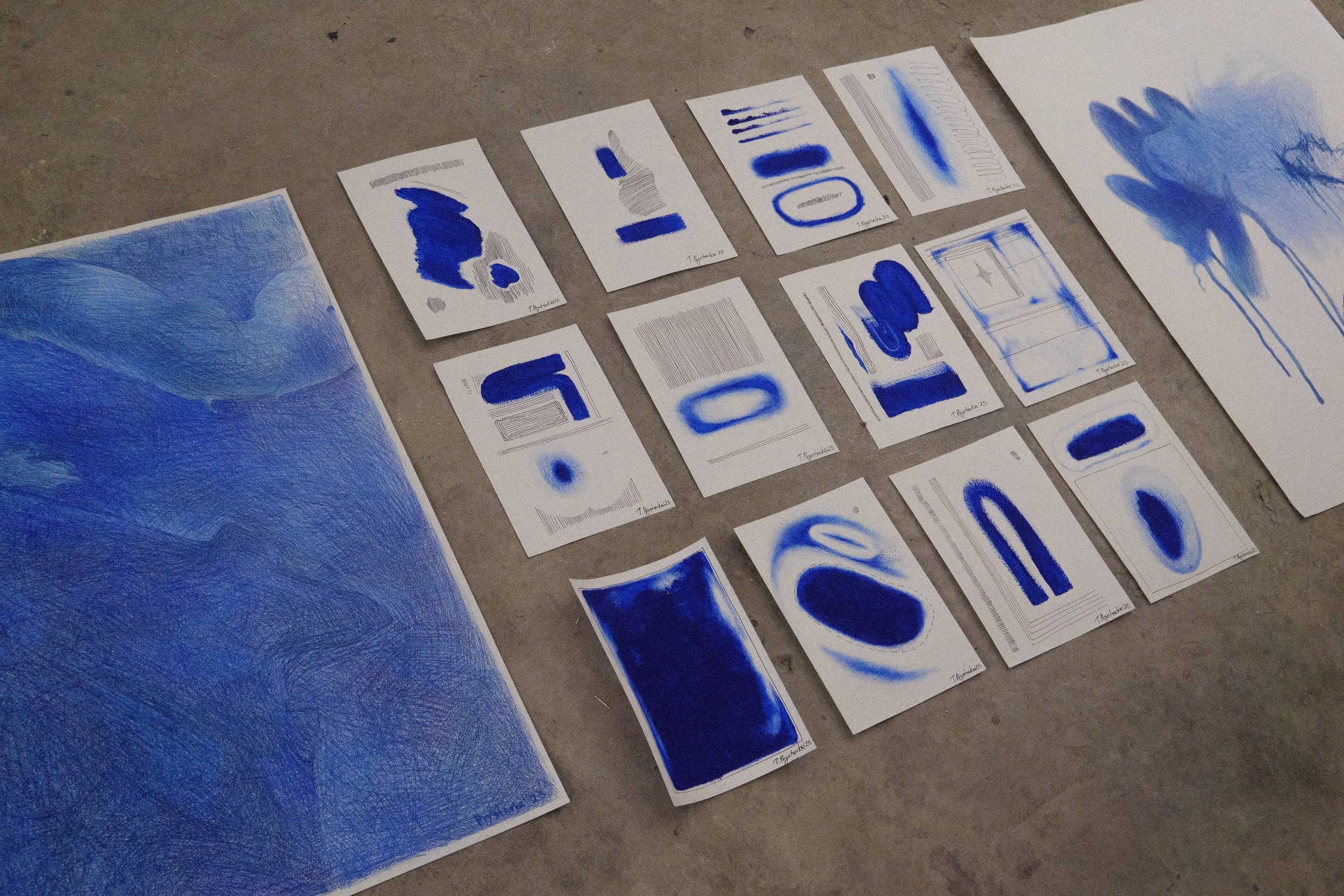TAtiana Prystavka:
Tatiana Prystavka is an artist and an immigrant currently based in France. As an immigrant artist, Prystavka addresses themes that are specific to place, with a visual study that consists of graphic works, a series of sculptures and digital creations. In Prystavka’s practice, she often confront nature with digital images, finding contradictions and synchroneity.
Her new series “Grounding” is the connection of electrical equipment to the earth, necessary to protect humans from electric shock. In a period of social instability and rapidly advancing technologies, Prystavka creates objects that resemble and are composed of the simplest natural materials: wood, metal, stone. In this way, Prystavka seeks to create a situation of mental grounding, safety, and calm contemplation for the viewer. The project was created in an active vineyard. It represents an observational diary of a young naturalist, combining elements of documentary with artistic imagination.
What themes and ideas inspire you in your art?
I have noticed that the process of creating art is like a diary for me. I mature through the creation of projects or series, and the exposition gathers into something resembling a novella. Currently, I am particularly inspired by the romanticisation of dreams and the irrational. I also enjoy working with artificial intelligence and finding its romantic component.
I have always valued craftsmanship and unique techniques in artworks, and now I appreciate them even more. I like it when looking at an object, you can see the artist's time spent on creating the work. I also enjoy creating multi-layered images.
What process of creating a work of art is most unique or important to you?
What materials, techniques or medium do you prefer to use in your artwork and why?
I prefer working with objects. I started my artistic journey with ceramics, but now I find it more interesting to work with wood and found objects. I discovered assemblage, allowing me to create complex sculptural compositions with a history. In graphics, I like working with tracing paper and a blue ballpoint pen. It happened that I conceptualised some works using the color blue. The blue ballpoint pen symbolises office routine, notes in a notebook, something like that.
How do you see your style and creative approach evolving over time?
My first project that showed me I could express myself as an artist was done at the Lomonosov Porcelain Factory. It was a composition of porcelain objects called CIRCUS MODULE. I used perfect forms, naive colours, and circus images. This project reminds me of childhood. Then I created the blue series, a period of my move to Moscow and saying goodbye to beloved St. Petersburg. In Moscow, I began to create more conceptual works. Regarding form and style, I moved away from perfect clean forms towards complexity, using non-standard methods. It was a process in which I tried to unlearn acting in a template manner. Now I like to combine all my findings. My style has become biomorphic, somewhat meditative with an emphasis on textures.
What role do you see art playing in today's society?
I believe the most important role of art is to show humanity to humans. It's a kind of mirror in which one can see their inner content and the state of society as a whole. It's a way to capture a snapshot of time in all its diversity.
Directly. As I mentioned before, art is a kind of diary for me. I like to create site-specific projects, using found sounds, objects, and stories. Of course, this cannot be classified as documentary; I still create artistic projects, but the foundation is always found in lived experiences.
How do your personal or life experiences influence your art?
How do you evaluate the success or effect of your artwork on the audience?
It's difficult. Sometimes, I react simply to the number of likes under a post on Instagram; sometimes, it's important for me to receive feedback from the professional community. Sometimes, I just notice that something has changed in relation to the theme I dedicated the work to.
What challenges have you encountered in your creative process and how have you dealt with them?
The biggest challenge fluctuates between the desire to lock myself away from everyone in the studio, draw, or play the piano—in essence, to remain in the creative process for a long time, without people and conversations—and the desire to socialize, be understood, and receive sincere feedback. Another difficulty is multitasking. Sometimes, organizing a regular routine seems daunting because I allow myself to get stuck in the artistic process to achieve a specific result. Another challenge, which has been haunting me since childhood, is showing my works.
Are there any special projects or works that you would like to highlight or share with the audience?
Currently, I live on a vineyard, which inspired me to create a series of sculptures from found materials here. I use grapevines, stones, and shards of ceramics. Each specific element represents a carrier of history, and together they create a new myth, an irrationally reconstructed nature. I see the series as a self-contained installation, wandering through which the viewer can immerse themselves in a dream-like state, where ordinary laws of physics don't work, and genuine feelings come to the forefront.
What future projects or ideas do you plan to realise in your art?
I have a few ideas related to music. I hope to someday compile all my musical findings into an album. I also take the design object very seriously. I would really like to create several original pieces of furniture, but for now, it's just a dream.













